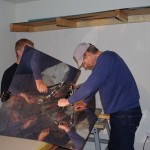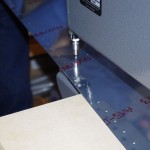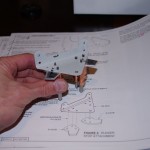The electrical power went off for quite a while today at our house and at the boys, as heavy thunderstorms and high winds knocked down trees and power poles around the area. Our internet connection was also down for about an hour. Tornado warnings were issued for Wake County, so not much work was done directly on the plane. I did use the time, however, to stage and later assemble a few logistical items.
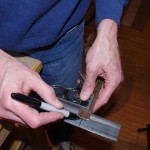 Many RV10 builders recommend using a piece of angle iron for both jigging and back-riveting the trailing edge of rudder, elevators, and ailerons. I had a six foot long section 1.75 inch wide, perfect for this application. Here I am measuring for the attachment holes.
Many RV10 builders recommend using a piece of angle iron for both jigging and back-riveting the trailing edge of rudder, elevators, and ailerons. I had a six foot long section 1.75 inch wide, perfect for this application. Here I am measuring for the attachment holes.
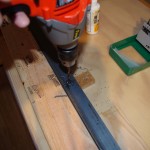 The plan is marry the angle iron with a 2×4 for clamping onto the workbenches. Making the combined unit removable will help with flexibility in the cramped shop space.
The plan is marry the angle iron with a 2×4 for clamping onto the workbenches. Making the combined unit removable will help with flexibility in the cramped shop space.
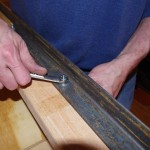 The holes are recessed in the front side wood face to allow the bolt heads with washers to be flush with the surface.
The holes are recessed in the front side wood face to allow the bolt heads with washers to be flush with the surface.
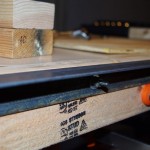 Clamped on the workbench side the angle iron can be adjusted up or down relative the the top. Before using the unit to align the rudder trailing edge, I plan to belt sand the iron and the married 2×4 wood. This will ensure they are absolutely flat, plus removes rust from the old iron surface.
Clamped on the workbench side the angle iron can be adjusted up or down relative the the top. Before using the unit to align the rudder trailing edge, I plan to belt sand the iron and the married 2×4 wood. This will ensure they are absolutely flat, plus removes rust from the old iron surface.
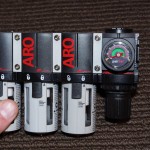 Also spent time with the power out to assemble the Ingersoll-Rand ARO 1000 Series air filters and regulator. (l-r) 5micron filter, 5micron filter, 0.3micron coalescing filter, and 160psi regulator. The goal is making sure no dust, oil, or water gets to the spray gun for priming/painting. These small units supposedly can handle ~50cfm of air, much more than the 5cfm needed for my Asturo ECO/SX gun.
Also spent time with the power out to assemble the Ingersoll-Rand ARO 1000 Series air filters and regulator. (l-r) 5micron filter, 5micron filter, 0.3micron coalescing filter, and 160psi regulator. The goal is making sure no dust, oil, or water gets to the spray gun for priming/painting. These small units supposedly can handle ~50cfm of air, much more than the 5cfm needed for my Asturo ECO/SX gun.
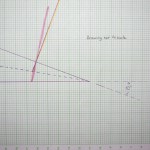
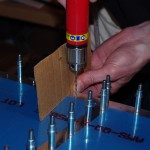
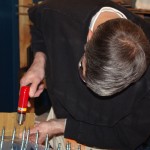
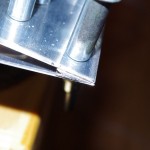
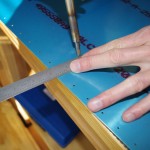
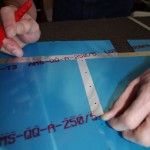
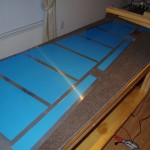
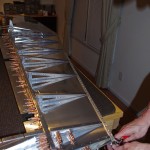
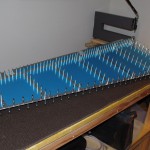
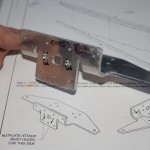
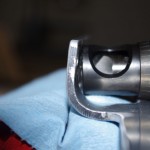
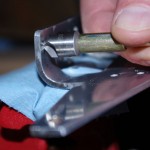
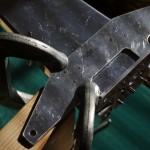
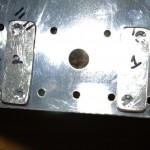

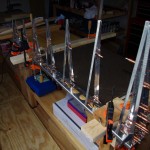

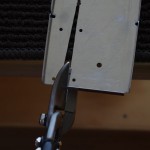

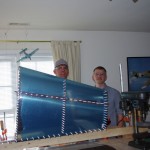

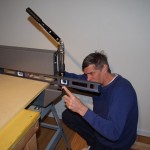
 Laying a 5/8inch sheet of MDF on the bench top provides a seamless surface to the DRDT-2. This picture shows the MDF will support the skin exactly level with the male die for the dimpling operation.
Laying a 5/8inch sheet of MDF on the bench top provides a seamless surface to the DRDT-2. This picture shows the MDF will support the skin exactly level with the male die for the dimpling operation. 